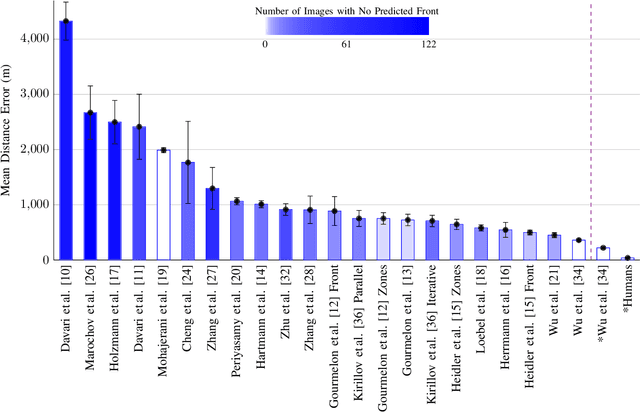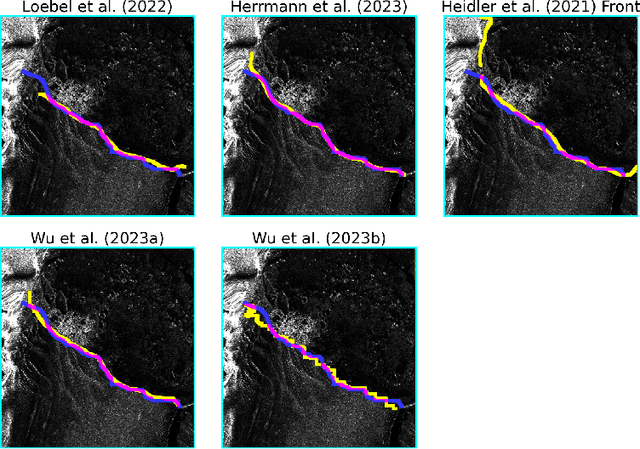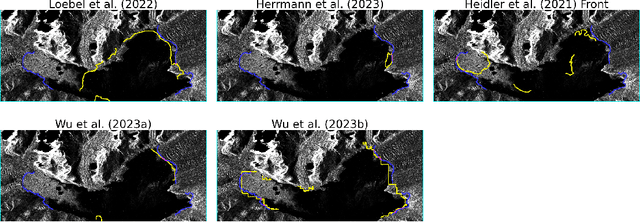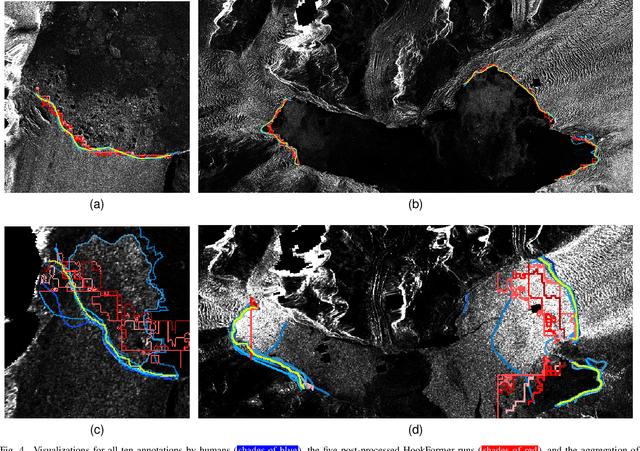Erik Loebel
Comparison Study: Glacier Calving Front Delineation in Synthetic Aperture Radar Images With Deep Learning
Jan 09, 2025



Abstract:Calving front position variation of marine-terminating glaciers is an indicator of ice mass loss and a crucial parameter in numerical glacier models. Deep Learning (DL) systems can automatically extract this position from Synthetic Aperture Radar (SAR) imagery, enabling continuous, weather- and illumination-independent, large-scale monitoring. This study presents the first comparison of DL systems on a common calving front benchmark dataset. A multi-annotator study with ten annotators is performed to contrast the best-performing DL system against human performance. The best DL model's outputs deviate 221 m on average, while the average deviation of the human annotators is 38 m. This significant difference shows that current DL systems do not yet match human performance and that further research is needed to enable fully automated monitoring of glacier calving fronts. The study of Vision Transformers, foundation models, and the inclusion and processing strategy of more information are identified as avenues for future research.
A Deep Active Contour Model for Delineating Glacier Calving Fronts
Jul 07, 2023



Abstract:Choosing how to encode a real-world problem as a machine learning task is an important design decision in machine learning. The task of glacier calving front modeling has often been approached as a semantic segmentation task. Recent studies have shown that combining segmentation with edge detection can improve the accuracy of calving front detectors. Building on this observation, we completely rephrase the task as a contour tracing problem and propose a model for explicit contour detection that does not incorporate any dense predictions as intermediate steps. The proposed approach, called ``Charting Outlines by Recurrent Adaptation'' (COBRA), combines Convolutional Neural Networks (CNNs) for feature extraction and active contour models for the delineation. By training and evaluating on several large-scale datasets of Greenland's outlet glaciers, we show that this approach indeed outperforms the aforementioned methods based on segmentation and edge-detection. Finally, we demonstrate that explicit contour detection has benefits over pixel-wise methods when quantifying the models' prediction uncertainties. The project page containing the code and animated model predictions can be found at \url{https://khdlr.github.io/COBRA/}.
 Add to Chrome
Add to Chrome Add to Firefox
Add to Firefox Add to Edge
Add to Edge